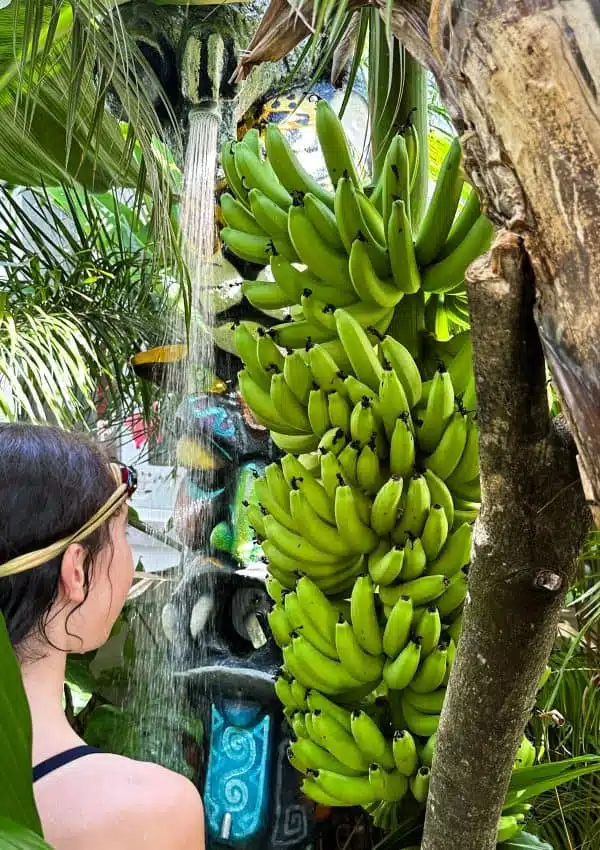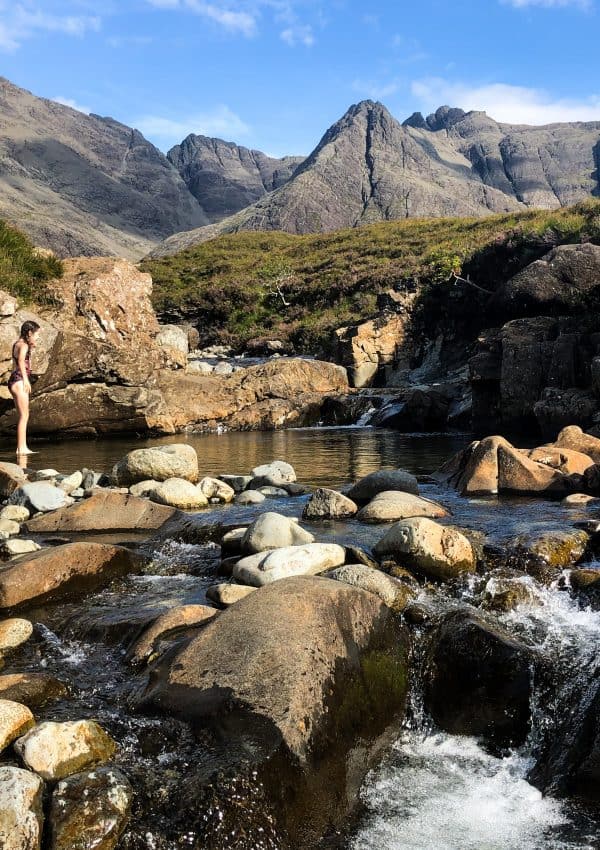Last updated on November 4th, 2024 at 09:04 pm
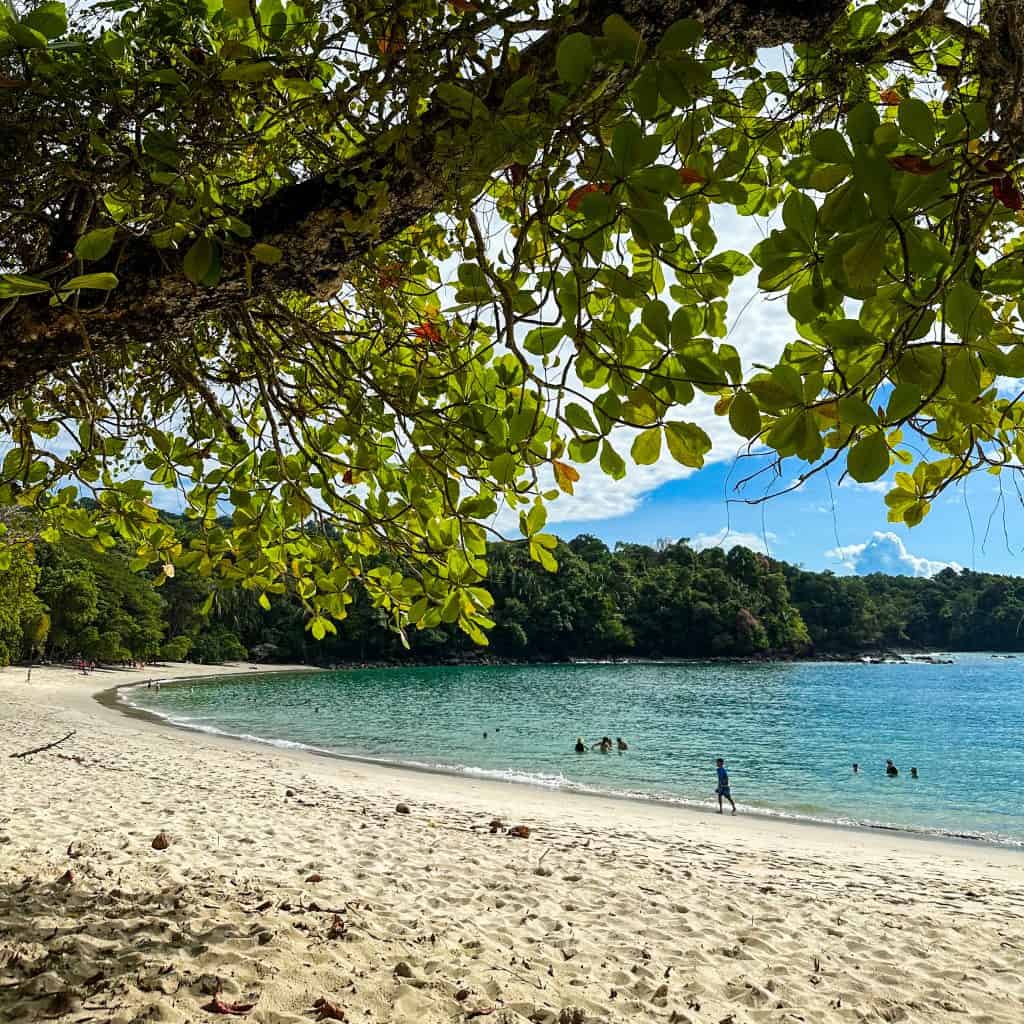
Are you looking to find out the best time to visit Costa Rica?
We visited Costa Rica in December which is the beginning of its dry season and edging into high season for tourism. We loved it (particularly the first week which was quieter) and had a great time. But what are the pros and cons of visiting at different points of the year and what are the best months to visit Costa Rica?
Your first consideration as you’re wondering when to visit Costa Rica should be how much you’re bothered by the rain! Does it really get you down if you’re on holiday and it’s raining every day, or would you just be happy to carry on regardless?
Then you might think about whether you want to visit when it’s quieter (and potentially cheaper). Are you willing to put up with some iffy weather, if it means you have Costa Rica to yourself a little more?
If you don’t mind the rain and you prefer it quieter, you could visit during the summer months (June, July and August). If you’re ok with potential crowds and want pretty much-guaranteed sunshine, go in December, January or February.
But the sweet spot might be May or November – known as shoulder season. It’s potentially a good balance between mostly decent weather and fewer tourists.
Overview of Weather in Costa Rica: What’s the Best Season to Go to Costa Rica?
So first, let’s look at the weather. Costa Rica has a tropical climate with distinct wet and dry seasons. While you’ll experience unexpected episodes of rain during dry season, and dry periods during rainy season, this is generally what you can expect:
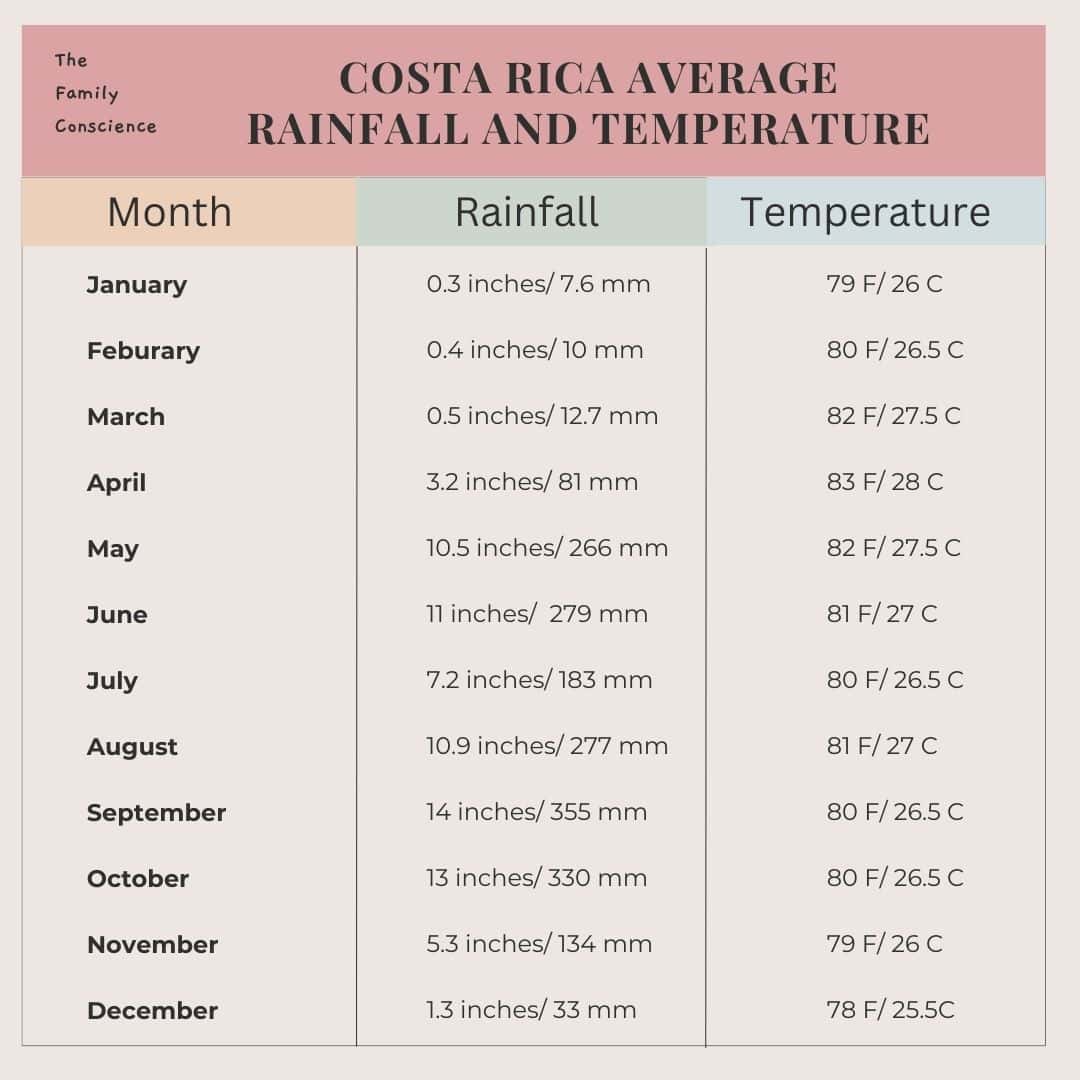
Dry Season (December to April):
This is considered the high tourist season. The weather is generally dry and sunny making it the best time to travel to Costa Rica if you’re looking for a beach vacation, or if you love hiking, and exploring national parks.
Rainy or ‘Green’ Season (May to November):
Rainfall is more common between May and November, but it usually comes in short, heavy bursts. The benefit of visiting Costa Rica at this time is that the landscape is at its most lush and green. This is the best time to visit Costa Rica if you’re a nature enthusiast as wildlife is more active, plus there are fewer crowds.
Transition Months or ‘Shoulder Season’ (November and May):
The months of May and November are considered ‘transition months’ as they sit right between the wet and dry seasons. You might experience a mix of sunny and rainy days. You might get lucky – or you might not! It’s a little bit of a gamble.
The shoulder season in Costa Rica also refers to the transitional period between the high tourist season and the low tourist season. These transitional months are considered “shoulder” seasons because they fall on the edges of peak travel times.
November:
This is the tail end of the rainy season when Costa Rica is getting ready to head into the dry season. While there may still be some rain, you’ll hopefully experience drier and sunnier days. It’s a period of changeable weather (so pack accordingly).
The landscape will be beautiful and green at this time of year since all the plants have been well watered! If you want to see this country at its greenest, November is the best month to travel to Costa Rica.

May:
May marks the end of the dry season and the beginning of the rainy season. It’s a time when the weather is transitioning from dry to wet, and you may still experience a reasonable amount of rain. As Costa Rica is coming out of its dry season, it won’t be as green as it will be in November or December.
During May, you’ll likely find fewer tourists compared to the peak months, making it one of the best months to visit Costa Rica if you want a balance between lower crowds and reasonably good weather.
However, keep in mind that weather conditions are quite unpredictable in November and May, and there’s a chance of encountering some rain during these transitional months.
It’s a trade-off between fewer crowds and the potential for mixed weather.
Temperature in Costa Rica:
The temperature in Costa Rica is relatively consistent all year. However, the coastal areas are usually quite a bit warmer than the central highlands.
The central valley and highland areas have a more temperate climate. Daytime temperatures are typically from around 70°F to 80°F (21°C to 27°C).
On the Pacific coast, daytime temperatures tend to range from 80°F to 95°F (27°C to 35°C).
The Caribbean coast is also warm (perhaps a little less so than the Pacific coast) but can be a bit more humid.
When we visited in December, we found the popular inland areas of La Fortuna and Monteverde quite a bit cooler. In Monteverde, we were wearing sweaters and rain jackets to tour Monteverde Cloud Forest, whereas when we were in Santa Teresa and Montezuma on the Pacific coast, we were in swimwear and definitely feeling the heat!
When is the best time to visit Costa Rica?
The best time of year to go to Costa Rica will depend on what you want to do while you’re there, as well as how much rainy weather (or crowds) bother you. Different regions of the country have slightly different weather patterns.
Here’s a more specific rundown of what you can expect during different months of the year:
Weather in Costa Rica in January

On the whole, January is top of the list when it comes to good times to visit Costa Rica – particularly if you’re a sun worshipper! It’s the peak of the dry season on the Pacific side, providing brilliant conditions for outdoor activities such as hiking, waterfall rappelling, ziplining and watersports.
It does get pretty hot on the Pacific Coast in January though, and there’s often little shade on the beaches here. Make sure you pack plenty of sun cream/ sunblock (it’s pricey to stock up on in Costa Rica). If you want a cooler climate, head to Costa Rica’s Central Valley and Highlands, and in particular Monteverde.
January on Costa Rica’s Caribbean coast is also mostly dry (although it does experience a bit more rainfall than the Pacific Coast). It’s a great time to visit the wonderful Puerto Viejo beaches on this side of the country.
Weather in Costa Rica in February and March
Visiting Costa Rica in February or March is sensible if you’re looking for good weather as it’s still well within Costa Rica’s dry season.
It is a popular time to visit as many tourists feel this is one of the best times to visit Costa Rica due to the likelihood of good weather, so expect some crowds.
High season can mean it’s sometimes tricky to get tickets to places such as Manual Antonio National Park, so if you’re travelling to Costa Rica in February or March, book your accommodation and any tours you really want to do well ahead of time.
Travelling to Costa Rica in April and May
Once you get into April and May, you’re starting to head into Costa Rica’s rainy season. However, it can be one of the best times to go to Costa Rica because it’s shoulder season and there will be less demand for accommodation and sometimes better prices too.
However, weather at this time of year can be unpredictable – so you’ll have to pack for all eventualities!
Visiting Costa Rica in June, July and August
Visiting Costa Rica in June, July and August will mean you can expect to be wearing raincoats for at least a chunk of your trip – particularly if you’re visiting areas such as La Fortuna and Monteverde.
Rainy weather can have an impact on the activities you might want to do. For example, trails you might want to hike may be slippery and muddy – and if you’re looking for a beach vacation, this is probably not the best time of year to visit Costa Rica.
However, Costa Rica often experiences afternoon and evening rain showers, so if you plan accordingly you can arrange to do a tour in the morning and be back at your hotel to rest in the afternoon when it’s raining. You might find this works for you!
Plus, Costa Rica is beautifully green in the summer months – so when it’s not raining, it’s definitely aesthetically pleasing.
Weather in Costa Rica: September, October and November
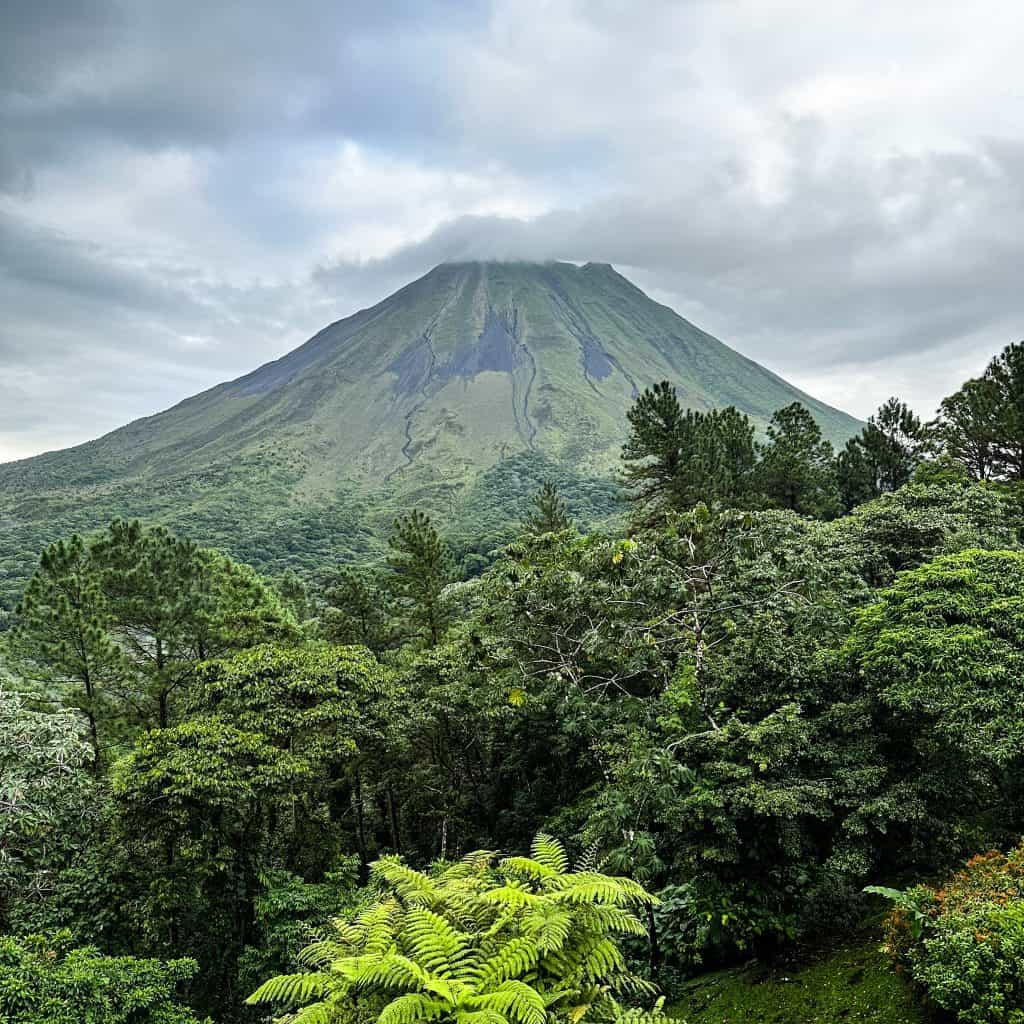
September, October, and November fall towards the end of Costa Rica’s green or rainy season. During these months, the country experiences more consistent and sometimes heavy rainfall, leading to lush green landscapes.
September can be one of the wettest months on the Pacific coast – rainfall can be frequent and heavy. October is similar, as my chart above shows!
The first half of November is often similar to September and October, but towards the end of the month, you can expect to experience quite a bit less rain as Costa Rica moves into its dry season.
Costa Rica in December
December is a popular time to visit Costa Rica as it not only marks the country’s departure from the wet season into the dry season, but the Holidays are also coming up.
The Pacific coast in particular tends to be dry in December, while there’s occasional rain on the Caribbean coast and in the areas around the Central Valley. We still experienced some rain when we were in La Fortuna and windy, temperate conditions in Monteverde.
Visiting Costa Rica During the Holidays

We visited Costa Rica at Christmas time. I have to admit, coming from a cooler climate, we did find it quite odd going to the beach on Christmas Day and seeing all the Christmas decorations up in 80-degree heat!
It starts to get particularly busy in Costa Rica around a week before Christmas and stays that way during its high season.
Easter/ Spring Break in Costa Rica is also a busy time.
It’s a good idea to take note of the holidays celebrated in Costa Rica as not all of them may be familiar to you. At these times, you might find that opening hours differ and some popular tourist spots may be extra busy.
Here are the Holidays Costa Rica celebrates:
New Year’s Day (Año Nuevo) – 1st January:
Costa Ricans celebrate New Year’s Eve with family gatherings, parties, and fireworks – much like many other countries. Attending a church service is also a popular thing to do. 1st January is a public holiday, so businesses may be closed or operate on reduced hours.
Holy Week (Semana Santa) – March/April:
Holy Week is a religious holiday in Costa Rica and there are often events and processions planned for it. Many Costa Ricans take vacations during this time, and some businesses may close. The coast can be crowded during Semana Santa as locals take advantage of the break.
Labour Day (Día del Trabajador) – 1st May:
Labour Day tends to be celebrated with parades, marches, and events promoting workers’ rights. Some businesses may close or have reduced hours on Labour Day.
Annexation of Guanacaste (Anexión del Partido de Nicoya) – 25th July:
On 25th July, Costa Rica commemorates the annexation of the Guanacaste province from Nicaragua in 1824. It’s usually celebrated with cultural events, parades, and traditional dances in the Guanacaste region.
Mother’s Day (Día de las Madres) – 15th August:
15th August is a day dedicated to honouring and celebrating mothers. Families often gather for special meals and restaurants may be busier than usual.
Independence Day (Día de la Independencia) – 15th September:
Independence Day acknowledges and celebrates Costa Rica’s independence from Spanish rule in 1821. Festivities include parades, concerts, traditional dances, and the raising of the flag. Schools, businesses, and government offices are closed on Independence Day.
Columbus Day / Indigenous Peoples’ Day (Día de la Raza / Día de las Culturas) – 12th October:
Columbus Day recognises the encounter between Christopher Columbus and the indigenous people of the Americas. Some areas have parades and cultural events.
Christmas (Navidad) – 25th December:
Christmas in Costa Rica is a festive time with decorations, lights, and celebrations. Celebrating on Christmas Eve is particularly big in Costa Rica and many people attend midnight Mass.
I have to say, when we visited at Christmas, there were virtually no changes to tour times and restaurant opening times. Things pretty much continued as normal.
Overview of weather in each Region:
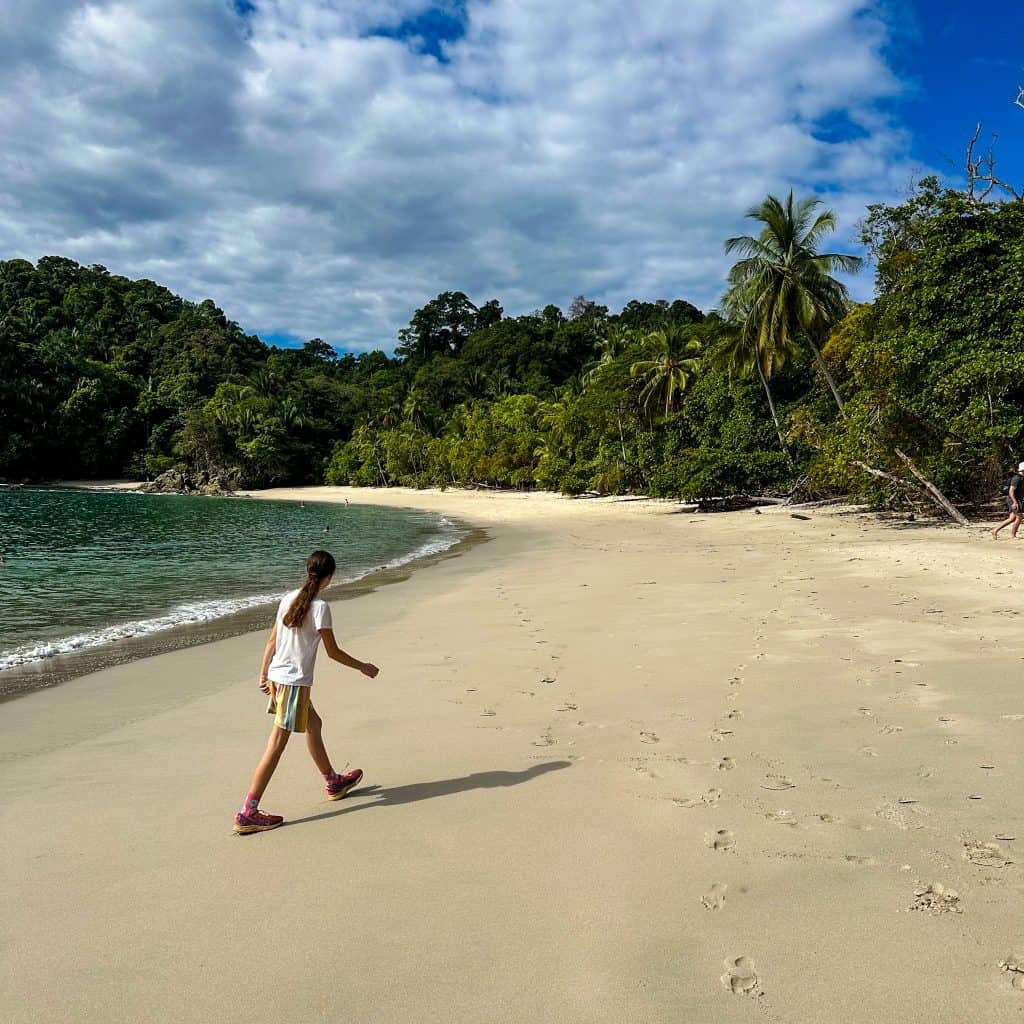
Although the dry and rainy seasons fall into distinct periods of the year, the weather does tend to differ in different parts of the country. For example, the Caribbean coast continues to have more rain than the Pacific coast during the dry season, while inland and mountainous areas such as Monteverde tend to be much cooler than the coast.
Pacific Coast
Dry Season (December to April): This is high tourist season with dry and sunny weather. You’re unlikely to see much, if any rain. Daytime temperatures range from 80°F to 95°F (27°C to 35°C).
Rainy Season (May to November): Rainfall increases, with occasional afternoon showers. Daytime temperatures stay warm.
Central Valley and Highlands
Dry Season (December to April): You’ll experience pleasant temperatures ranging from 70°F to 80°F (21°C to 27°C) and dry conditions.
Rainy Season (May to November): There’ll be increased rainfall, making the surrounding landscape beautiful and green. Daytime temperatures are still fairly warm.
Caribbean Coast:
Dry Season (December to April): While the rest of the country experiences dry weather, you might still experience some rain on the Caribbean side of Costa Rica.
Rainy Season (May to November): Rainfall becomes more consistent, and temperatures range from 75°F to 85°F (24°C to 29°C).
Northern Plains (Arenal, Sarapiquí):
Weather and temperatures are similar to the Central Valley and Highlands. There will be some variations based on specific location.
Southern Pacific Coast (Dominical, Manuel Antonio):
The weather and temperatures here tend to be similar to that found on the Pacific Coast.
Guanacaste Region:
Dry Season (December to April): Conditions are warm and dry with daytime temperatures ranging from 80°F to 95°F (27°C to 35°C).
Rainy Season (May to November): Some rainfall, but less than in other regions. Temperatures remain warm.
Nicoya Peninsula:
The weather and temperature on the Nicoya Peninsula are similar to other locations on the Pacific Coast.
Guanacaste Mountains (Monteverde):
Dry Season (December to April): You’ll experience pleasant temperatures and mostly dry conditions. It tends to be cooler in this region than in other parts of Costa Rica, and sometimes a little breezy.
Rainy Season (May to November): Increased rainfall, creating the lush cloud forest this region is so famous for! Daytime temperatures are cooler.
Best Things To Do in Costa Rica in Rainy Season
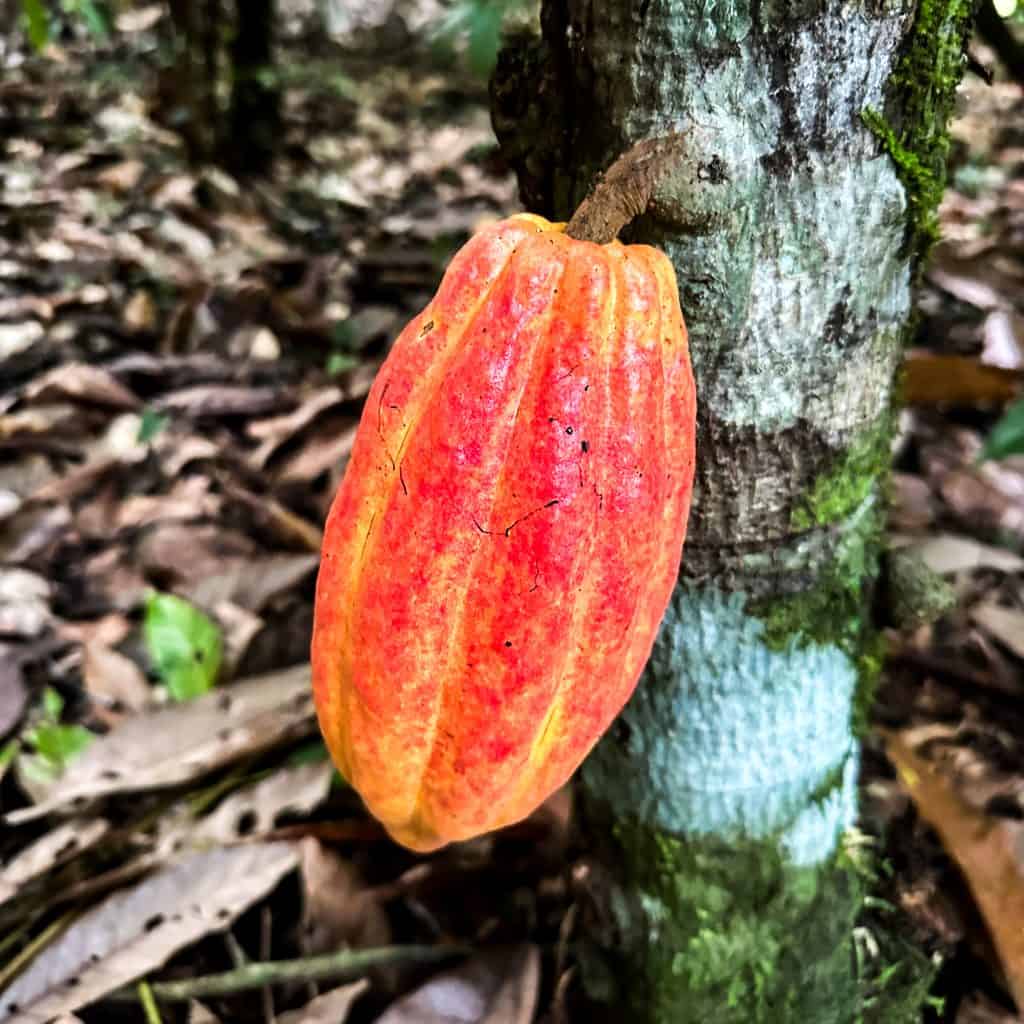
Costa Rica is still an amazing place to visit even if it’s chucking it down. Here are some ideas for what to do in Costa Rica when it’s raining (find more in The Ultimate 3 Week Costa Rica Itinerary for Families):
- Take a dip in the hot Springs (La Fortuna in particular is famous for them). It’s actually really cool being in the hot springs when it’s raining!
- Book a coffee or chocolate tour – most of these are at last partially conducted indoors. We liked Don Olivio Chocolate Tour in La Fortuna.
- Head to a museum or art gallery – if you’re in San Jose, there are plenty you can visit, including the fantastic Museo Nacional de Costa Rica.
- Get a spa treatment – if your hotel doesn’t offer them, they’ll be able to point you in the right direction.
- Look into a cookery class – there are lots on offer in La Fortuna.
- Sit on the verandah and enjoy the view – sometimes it’s kind of magical to watch the rain.
- Go to the National Parks anyway – just dress appropriately!
Best Things To Do in Costa Rica in Dry Season
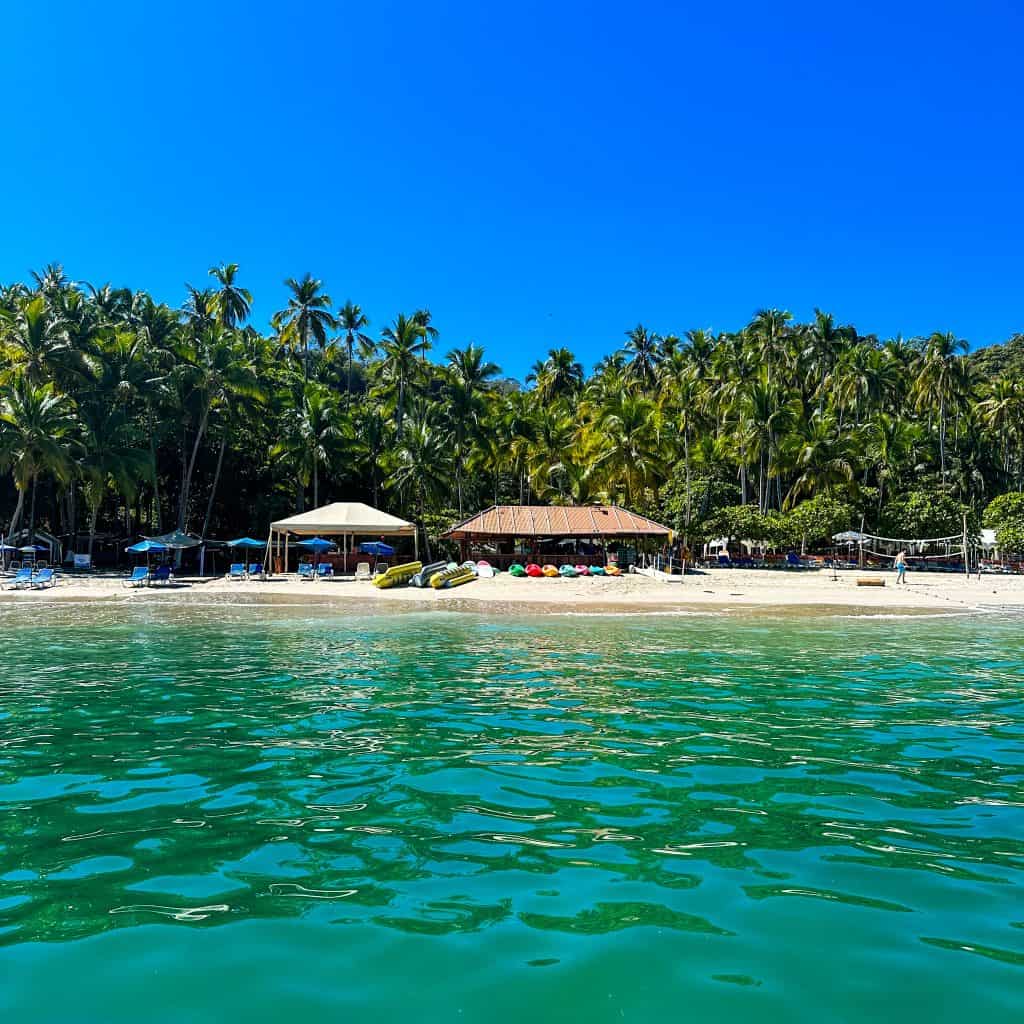
There’s loads to choose from if you’re visiting Costa Rica in the Dry season, although remember it does get really hot and when the sun is out, you’ll need your sunblock and plenty of water. Plus it’s busier at this time of year, so book ahead for tours.
- Hike in National Parks such as Manuel Antonio and Monteverde Cloud Forest.
- Try surfing (Santa Teresa is a great place to do this – for more on Santa Teresa check out From Montezuma to Santa Teresa: Two of the Best Beach Towns in Costa Ria).
- Go horse-riding – a great way of seeing the scenery in Costa Rica.
- Go to the Beach (both the Pacific coast and Caribbean coast have lots of amazing beaches, but my favourite was Biesanz Beach in Manuel Antonio).
- Tour a Volcano(Poas and Arenal are two of the best – but conditions need to be good to see them in their full glory).
- Look into Zip-lining and canopy tours (you’ll find these all over Costa Rica). We went with The Original Canopy Tour in Monteverde.
- Book a Boat tour and snorkelling (read my Tortuga Island Tour Costa Rica – Our Day Trip with Zuma Tours post for info).
So when is the best time to travel to Costa Rica?
In summary, if you prefer dry and sunny weather, December to April is the best time of the year to visit Costa Rica.
If you enjoy lush green landscapes and don’t mind occasional rain, the green season from May to November might be more to your liking. You’ll also be avoiding the crowds. September and October are often the rainiest months so you might want to avoid those.
Consider the specific activities you want to do and the regions you plan to visit when deciding on the best time for your trip.
Costa Rica Best Time to Go – Final Verdict:
My pick for the best time to go to Costa Rica would be the last two weeks of April/ first two weeks of May, and the last two weeks of November/ first two weeks of December. It should be the perfect balance between decent weather and smaller crowds!

